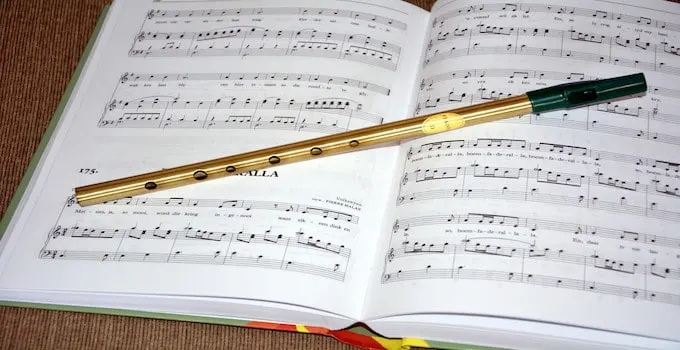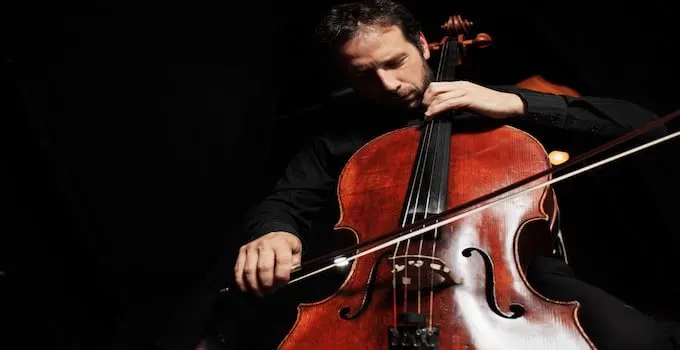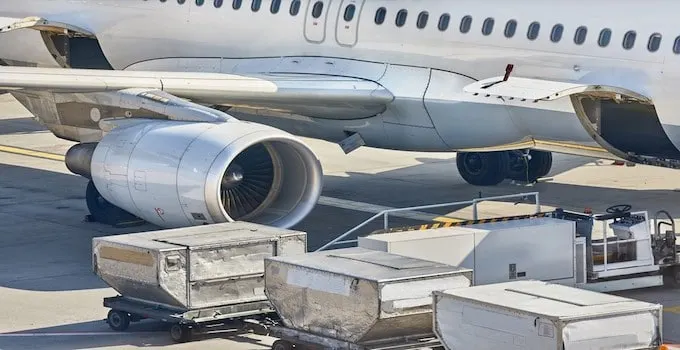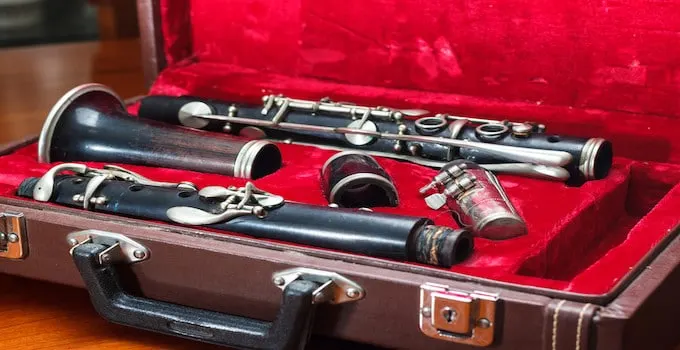1. Plan in advance
For the big concert at the other end of the world to work out, a lot of preparation and thought has to be done when it comes to transporting musical instruments. Is your instrument suitable for a flight at all? Is the instrument suitable for transport in the cabin? Is it perhaps an extremely precious instrument that must not be broken under any circumstances?
Depending on whether the good piece is a banjo for 30 euros from the supermarket or a Stradivarius for millions of euros, there are various options for carrying your musical instrument.
In some cases, your musical instrument also needs to be registered/authorized in advance by the airline. This especially holds true for very big instruments (transport in the hold), such as double basses, harps and drums.
Also, it is unfortunately also the case with musical instruments that each airline has their own set of rules. Some do allow guitars in the cabin, and some don’t, some will charge you extra for musical instruments as checked baggage whereas others do not collect money as long as your regular checked baggage allowance is not exceeded.
2. Small Instruments in the Cabin, please
Small instruments, such as this silver flute, may be stowed in hand luggage as long as they do not exceed the maximum permitted dimensions for hand luggage.
Small instruments, i.e. tiny ones (e.g. small flutes, triangles, ukuleles, possibly smaller violins), may be brought into the cabin of all airlines.
The rule of thumb is that the instrument can be brought into the cabin as long as it does not exceed the maximum dimensions allowed for hand luggage.
Unfortunately, the permitted dimensions for hand luggage are not the same for every airline, so you must be careful and check the permitted dimensions for hand luggage with the airline in question. But even here I can somehow help you (at least a little bit) because in a weak moment of seemingly limitless motivation I have crafted a list with the hand luggage regulations for practically all well-known airlines worldwide.
On this list, you will find the maximum allowed dimensions for your hand luggage and added further useful information about personal items (sometimes also called a small piece of hand luggage), which might be carried on board in addition to your trolley or backpack.
3. Book a Cello Seat
If you are planning to bring your Cello into the cabin, you will need to book an additional passenger seat for that.
Would you like a cello seat or a conventional seat?
This question is not as absurd as it might seem at first glance! Because many airlines advertise a “special seat” for their musical instrument for the transport of larger musical instruments.
How courteous… um….unfortunately not really.
Because such a seat usually costs practically as much (if not as much) as your conventional seat. But why is it called a cello seat? Well, this is because Cellos are the ideal candidates for these kinds of additional seats.
This is due to the fact that the cello is too big to pass through as hand luggage, but is somehow considered to be ideal to travel on its own seat, as it can be easily attached to such a seat due to its medium-size.
The booking for such a mysterious instrument seat can usually be made during the regular online booking of your flight (if you book through the airline’s official website).
This usually works by adding an additional passenger to the form – as a placeholder for the instrument – and then giving him the “special name” for instruments (depends on the airline, some name those seats “Extra Seats”, some airlines might require you to fill in the name of the instrument as part of the name for the seat, etc.). Please contact your airline to get the required information.
For cello players, I would like to take this opportunity to share a website that I recently came across:
Under this link, you will find a Cello-Transport-101, which reports in detail about the transport of cellos on board. Very useful, indeed.
4. A Problem Child called “Double Bass”
Anyone travelling by air with a double bass will not be able to avoid the transport of his beloved musical instrument in the hold of the aeroplane.
To put it plain and simple, musicians with double bass don’t have it easy on air travel.
First of all, you certainly cannot bring your beloved double bass into the cabin, and secondly, many airlines have a special procedure for carrying double basses. For example, a double bass must be registered in advance with almost all airlines.
Other airlines, on the other hand, do not transport double basses at all.
5. Be careful with Musical Instruments in the Cargo Hold
With larger musical instruments that are not tolerated in the cabin, you sometimes have no choice but to have the good piece transported in the cargo hold of the aircraft.
On the Internet, you can find some horror stories of musicians who had their musical instruments transported in this way and then had to regret it bitterly because they found their instruments broken.
Of course, this is very unfortunate. However, transport in the cargo compartment is usually much cheaper than the transport on an additional seat (instruments/cello seat), and so you might have to take the risk.
6. Packing well is critical
Musical instruments are often damaged during air travel. Good, padded packaging is therefore mandatory.
Many of the conventional transport cases are not suitable for transport by air. In particular, carriage in the cargo hold can be problematic, as the climatic conditions there can differ considerably from the temperatures in the cabin.
When packing, care should be taken to ensure that the musical instruments have as little room for movement as possible and that they are well padded. This can be achieved with polystyrene and bubble wrap.
To protect your instruments from falling damage, you can try the following when packing them (perhaps it is best to ask your airline first whether this is okay or not … but it is certainly worth considering!): Make a small slit in the top of the packaging box so that the handle of the instrument case remains tangible.
In this way, you at least give the staff the opportunity to handle your instrument more gently. If this is not possible, you may also be able to attach an additional handle to the box.
One more thing: A soft case (e.g. for your guitar) is, of course, a complete no-go for transport in the cargo compartment. A hard case is a must!
Another trick, which I have just found in a musicians’ forum, obviously consists in the fact that one deliberately chooses a very large and heavy container for the transport of the instrument, which cannot be “swung through the air” by the staff.
Admittedly a somewhat extreme measure.
7. Rio Rosewood or Ivory Components? Beware!
Anyone travelling by air with an instrument must overcome many hurdles. That much should already be clear at point 7. But did you also know that the successful transportation of your instrument could also fail due to the material of your musical instrument? Well, now you know!
Various materials (e.g. various types of wood) fall under the protection of species and this can cause problems during import (customs). But as a European citizen, you are generally safe, as long your travels are within the borders of the EU.
Among other things, the following materials are problematic:
- Ivory → e.g. in keyboards, under saddles and inlays of string instruments and in bows
- Fishbone
- Whalebone → may be found in certain bows
- Turtle shell → e.g. African plucked instruments with turtle shell sounding bodies
- Tortoiseshell → found in mandolins and other plucked instruments as well as in plectra for stringed instruments
- Rio Rosewood (Dalbergia nigra) → to be found in guitars, flutes or violin bows for example
- Macacauba wood → e.g. in marimbas, xylophones and castanets
However, the complete list of protected materials also includes many other materials and cannot be fully listed here due to lack of space.
The bottom line that you should draw from the whole thing is that if you are travelling outside Europe, you must present official documents that accurately document that all materials used on the instrument have been legally acquired and processed under the applicable species protection regulations.
This is how you must proceed:
- Have a Declaration of Materials drawn up
- If no materials such materials are used (according to the result of the Declaration of Materials!), then obtain a negative certificate confirming that you have not used any such species-protected materials in your instrument.
- However, if your instrument contains such materials, you will need a so-called CITES certificate (CITES = Convention on International trade in Endangered Species of Wild Fauna and Flora).
For travel within the EU, it does not (yet) seem to be necessary to own or carry such documents (for private use).
8. Take out an Instrument Insurance Policy
For expensive musical instruments, it is a good idea to get instrument insurance. Such insurance can cover damage to both the instrument and its accessories.
Do you happen to have a Stradivarius at home that you would like to take with you on your next flight? Then I would advise you to take out an instrument insurance policy because I wouldn’t trust my favourite airline that much myself. So have your musical instrument insured with an instrument insurance company.
If this is your private musical instrument, then you should look out for insurance that offers individual policies.
If you are travelling with your orchestra, a group contract might be right for you.
Individual policies, however, are not even offered by some of the insurance companies. So check with your insurance company to see if this is possible at all.
Furthermore, you should pay attention to the services offered and the need for validity when taking out insurance. Insurance, which is only valid in Switzerland, will not be of much help if you find your harp in Moscow in individual pieces. So read the contract carefully and pay attention to all nuances.
Moreover, accessories for your musical instrument can usually also be insured at the same time. Make sure that all accessories are listed in the insurance policy so that it is also insured in the event of damage.
9. Check Instrument for Damage
A damaged instrument should, in any case, be reported immediately to the luggage office (Lost & Found Office). Fill out a damage form right there.
Check your instrument at the airport. It is best to do this immediately after the flight. In the event of damage, it can be extremely important that you report the damage as soon as possible. Report the damage to the baggage tracker.
Ask for an appropriate damage form and document the damage (if possible) with pictures.
Under certain circumstances, damage can also be claimed retrospectively. The legal reporting period is 7 days. However, you will then have the problem that the burden of proof will in principle be reversed and you will have to prove that the damage occurred during your air travel.
It is, therefore, better to take your time directly at the airport and report the damage immediately!
Oh, and one more thing: If you (already) have instrument insurance, let those guys know about the damage as soon as possible, because they will then deal with the problem and possibly contact the airline directly on your behalf (so that you can sit back and relax….at least a little bit).

Hey guys! It’s me, Marcel. I am the proud owner of carry-on-baggage.com. I am dealing with hand luggage related issues on a daily basis and I own several websites in this niche. Travelling is one of my biggest passions in life and I, therefore, happen to know a thing or two about hand luggage. I hope you all have a safe trip! Take care and thanks for the support. I really appreciate it.








